Olive Picking in Central Portugal
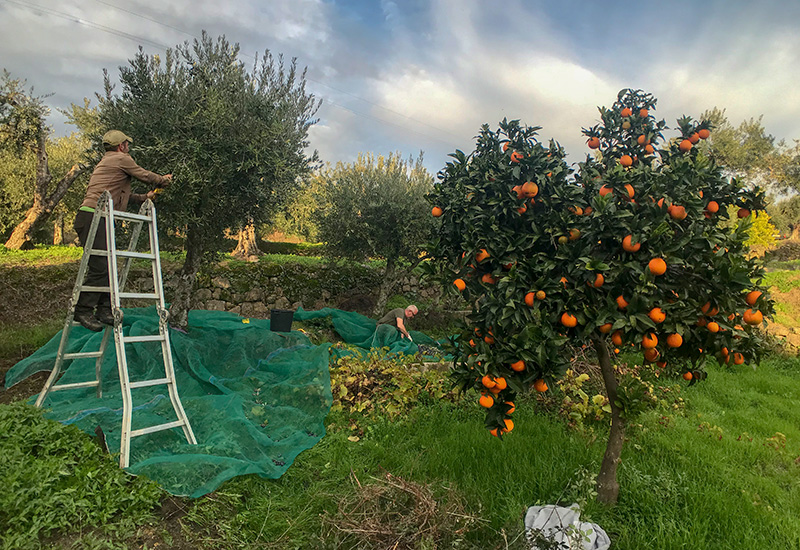
When I had the idea of buying land and living the rural life in Portugal I didn’t give much thought to what type of land I actually wanted. On the top of my ‘must haves’ list has always been a ruin and obviously a water source, but beyond those things I wasn’t all that picky. Even after buying my place, I didn’t even notice that it was packed with mature olive trees. In fact, I only counted them for the first time right before starting to pick them. Turns out there are 30 and, luckily, it turns out that I really love picking olives. Even better, I really really love olives and olive oil!
In this part of Portugal, olive picking runs from mid-November through December and sometimes all the way into January. Olive trees don’t seem to take a lot of tending, so you won’t find people working on them all year round and most olive groves seem totally abandoned. They only spring to life this time of year when teams of hired workers, family, and groups of friends descend onto their quintas for the annual harvest. I’ve hardly seen any of my neighbours, but these past two weeks have seen the land around me buzzing with people.
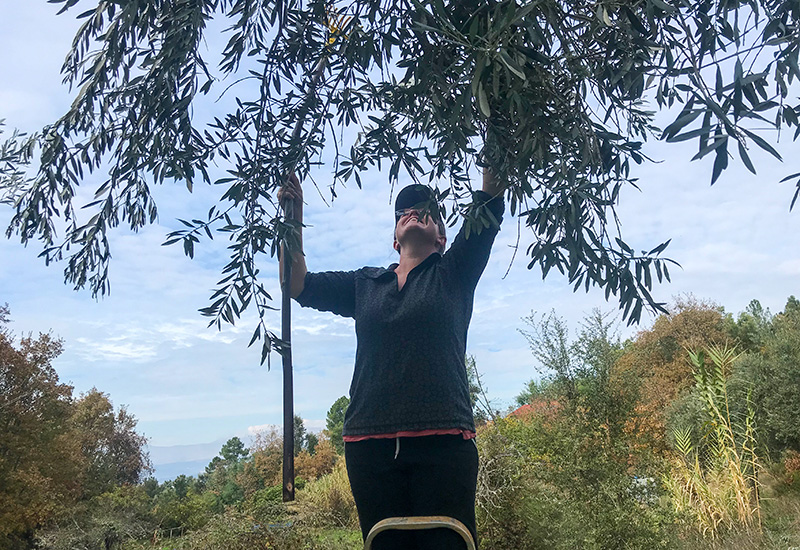
I’ve had olive picking described to me a few times but, until I did it myself, it was hard to imagine the process. I was told of large nets, small yellow rakes, ladders, tree-climbing, shakers, and ticklers. Yes, ticklers which are a motor-driven device with long finger-like things that oscillate back and forth to rid the tree of their olives. We went for the more low-tech approach of plastic rakes which is surprisingly effective. The rakes look like toys but they’re designed to be the perfect size to scrape down an olive branch, taking the fruit off as the branch passes between the gaps in the rake. It’s incredibly satisfying when you find a loaded branch and get a whole bunch of olives off in one pass. The rakes can also be attached to sticks so you can reach them way up into the trees and claw the olives off, bit by bit. It’s a thoroughly satisfying process, I assure you. The olives fly off the trees in all directions on to large nets that are laid beneath the trees.
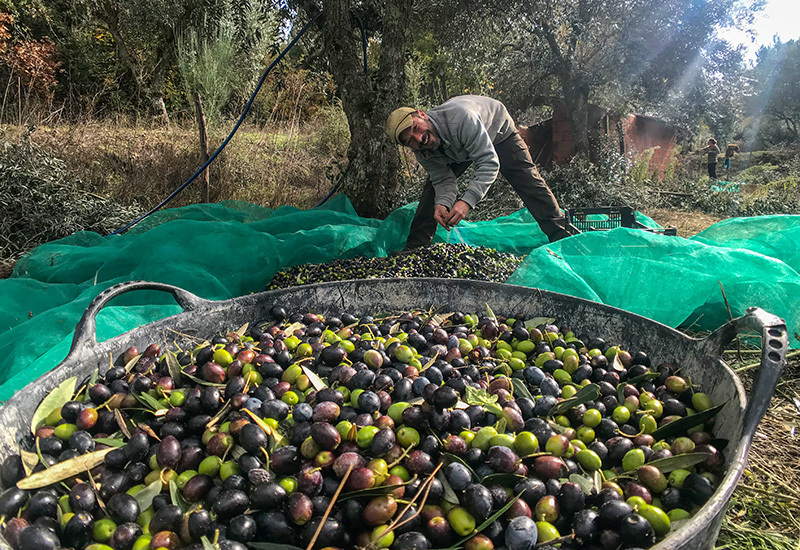
The best part for me was sharing my first olive picking experience with some of my good friends here in the area. They’ve picked together as a team in years past and I was able to muscle my way in on the action now that I’ve got a nice little olive grove of my own. I think it’s such a great way to do things – we rove around to each other’s land, picking as much as we can in five days before taking our combined olives to the lagar (olive press). The lagar has a couple of options for getting oil: You can take your olives in, have them weighed, and then get the equivalent in oil given to you soon after. Or you can take a minimum of 600 kilos of olives to our local lagar, have them pressed as their own separate batch, wait for it to be processed and bottled, and then the oil that’s given back is your own. This is a great way to make sure you get oil from your own trees which is both very cool and also the only way to be sure it’s organic.
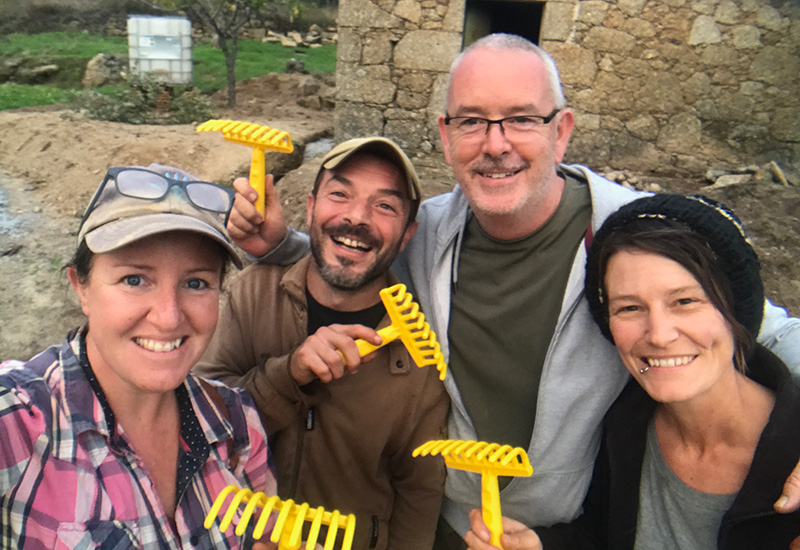
But 600 kilos is a hell of a lot of olives! So combining with friends is a great way to reach the minimum and you’ll find lots of people teaming up. We divided the share of oil based on the number of hours each person contributed to the effort. So, if you’re able to only pick three out of five days but someone else picks every day, the oil will be divided up accordingly. It’s a really interesting way to do things and I quite like it as it seems to be quite fair. Each of us takes a turn cooking, depending whose land we’re on. Some places will have a lot more olives that others but that just means we work hard at getting as many olives off the trees as we can during the allocated days before moving on. We’re all hard workers as it is, but when you throw in olive oil as the prize at the end, it’s easy to stay motivated. Of course we make sure to eat well, drink wine, and have a lot of laughs along the way and we had wonderful weather for the week we picked and we were all smiles the entire time. If it were raining or cold or both, I assure you we wouldn’t have been quite so smiley!
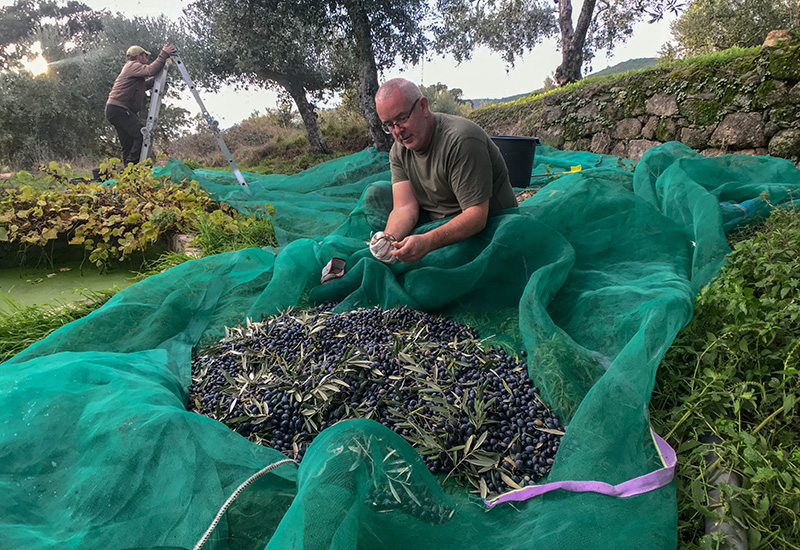
It’s also common for people who don’t have trees of their own to rove around helping others in exchange for a share of the oil. There are so many olive groves in this area and lots of elderly people who could use a hand or people who have too many trees to pick on their own, so there’s plenty of opportunities to jump onto a team. It’s a really cool time of year because it brings people together and there’s a nice atmosphere when the usually empty groves are filled with folks picking their olives. It’s also quite awe inspiring (and mildly unsettling) to see 80+ year-old ladies up the top of ladders. We ended our four days of picking on Friday and were joined by a few other friends who came for the fun and a good feed. It was a little post-picking-party and an awesome end to an amazing week.
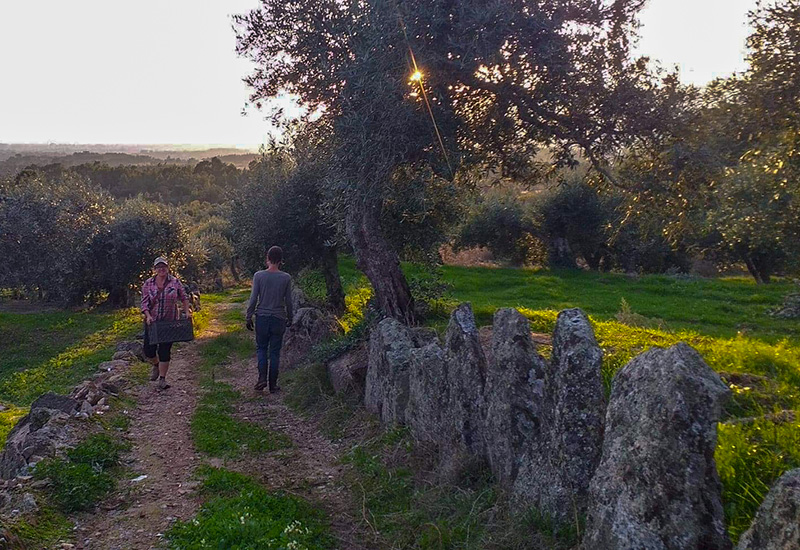
When all was said and done, we realised that we didn’t have enough space in our cars for all of the baskets and barrels of olives. With my farm thrown into the mix, we ended up picking more than they ever had in the past and it was a bit of a surprise to see that we were stuck for transport. Luckily, our friends at Mount of Oaks came to the rescue with a lend of their pickup truck. We decided to pour the olives out of their containers and straight into the back of the truck and that saved the day.
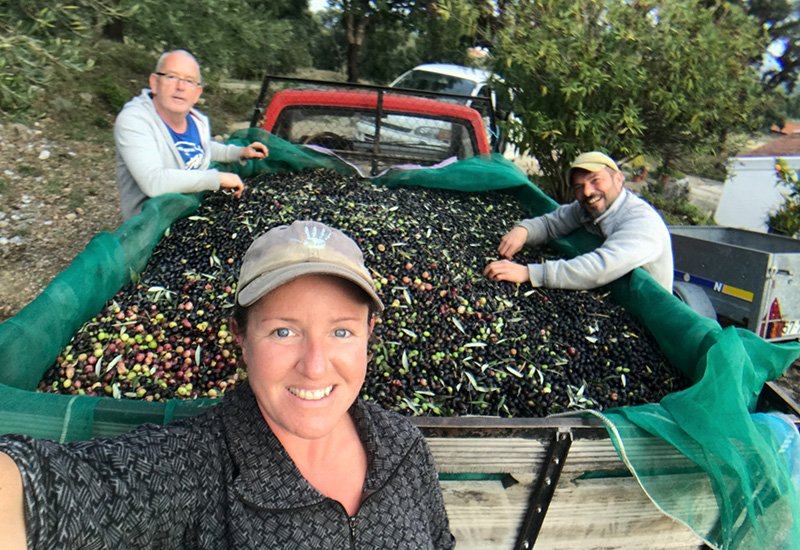
Taking the olives to the lagar turned out to be an annoying process. Well, not for me… I got to sleep in and the drivers had to wake up mega early to try to get to the lagar for around 6am. Yikes! As it turns out, the lagar was busy from the previous day so they had to leave the truck and do it all again the following morning. Yikes again! It didn’t sound like the best way to spend a weekend and I was happy to be tucked in bed, but feeling a bit bad they had to make two trips. When all was said and done and the olives weighed and pressed, it ended up taking around 10 kilos of olives to one litre of oil, which isn’t a great ratio, but some had it better and some had it worse. I took home almost 20 litres of oil and that’ll do me for the year and then some!
I really loved the whole picking experience and I’ll look forward to it next year! However, I do realise that this is all new and exciting to me… perhaps on year three of having to pick my trees each November I might not be so eager. But, for now, I’m a big fan!


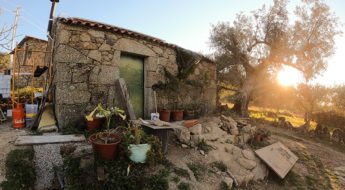
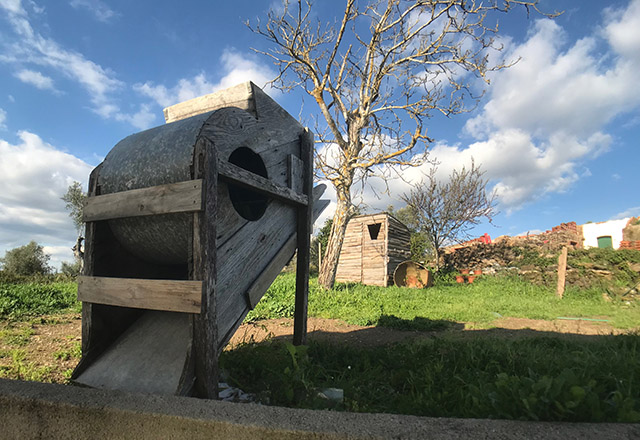
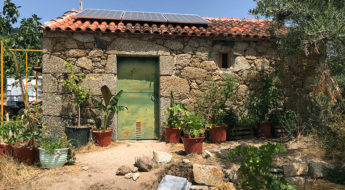

Leave a Comment